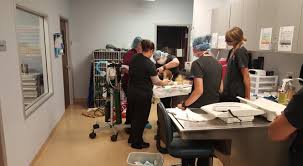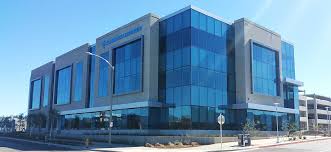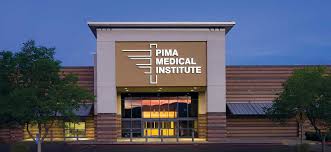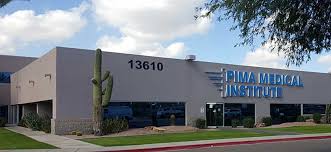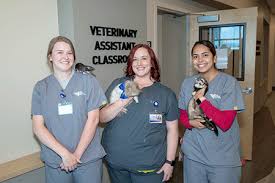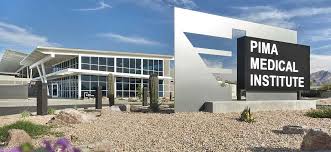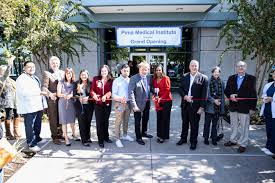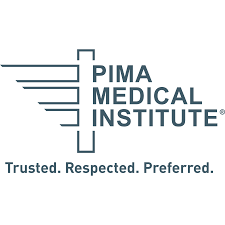TAKE THE NEXT STEP – CHOOSE A PROGRAM
Our school can provide you with the pathway to a rewarding career in healthcare. From certificate programs to online bachelor’s degrees—we’ll help you choose the right course. And whatever direction you take, we’ll be by your side the entire way. Most of our certificate programs can be completed in about a year. You can earn an associate degree in two years or less, and you can complete your bachelor’s degree in about the same time. Our programs are accelerated and get you ready for the workforce fast.Certificate Get the training you need for a career in healthcare in about a year from one of Pima Medical Institute’s certificate programs.
- Dental Assistant
- Medical Administrative Assistant
- Medical Assistant
- Medical Billing and Coding
- Nursing Assistant /Nurse Aide
- Patient Care Technician
- Pharmacy Technician
- Phlebotomy Technician
- Practical Nursing
- Sterile Processing Technician
- Veterinary Assistant
Associate Excel in your chosen healthcare profession and earn your associate degree in two years.
- Dental Hygiene
- Diagnostic Medical Sonography
- Health Care Administration ONLINE
- Medical Laboratory Technician
- Nursing
- Occupational Therapy Assistant
- Ophthalmic Medical Technician
- Paramedic
- Physical Therapist Assistant
- Radiography
- Radiography – Bridge ONLINE
- Respiratory Therapy
- Surgical Technology
- Veterinary Technician
Bachelor’s Offered fully online, earn your bachelor’s degree in one of these exciting career paths.
HOW DO I APPLY?
Becoming a student at Pima Medical Institute is an exciting time, and applying for school shouldn’t be intimidating! There is already enough uncertainty in the world, so we want to help you make the application process as easy as possible. You can get started now because we have solutions for you.
That's why we want you to speak with a medical career specialist who can walk you through the entire enrollment journey. With their help, you'll find the perfect program fit for you based on your goals and interests. So don't let this time of uncertainty stop you from your future in healthcare.
ADMISSION REQUIREMENTS AND ENROLLMENT PROCEDURES
Potential students should have a high school diploma or recognized GED equivalent. A high school transcript or evidence of satisfactory completion of GED testing will be requested of applicants prior to starting class.
Applicants under legal age must have written approval of a parent or legal guardian. Students who are of compulsory school age may not enroll unless they have a high school diploma.
All applicants must take an entrance exam and pass with a minimum score. This requirement may be waived for applicants, except in California, with official academic transcripts or certificate showing proof of completion of an associate degree or higher. All medical degree and certificate applicants must be interviewed prior to acceptance.
Although it is not required as part of the admission requirements, students may request that their ACT score be sent to Pima Medical Institute.
Late enrollments can be accepted (except in California), but only upon approval of the campus director.
To learn more and for specific admissions requirements by program, set a time to speak with a medical career specialist who will help answer all your questions.
PAYING FOR SCHOOL
The right education can set you up for success now and into the future. Starting a rewarding career that will provide growth and help build a better life for you and your family requires the proper training.
Education is the key that opens doors for you. It readies you to think critically, address situations thoughtfully and prepares you for a lifetime of success.
At Pima Medical Institute, you will have the support you need to achieve in the classroom and beyond.
When you graduate from Pima Medical Institute, you will not only have the certificate or degree you worked hard for, you will walk away with the skills and real-world experience that will serve you well when you begin your job search. Your credentials and knowledge will set you apart from others in the workplace and show employers your dedication to the field.
We know heading back to school is a big decision. There are lots of things to consider and many questions you may have – Am I making the right choice? Is this the best school for me? How will this affect me and my family? One of the biggest questions is often, How do I pay for college?
Borrow Smart
Understanding the options you have to pay for school is important, and can be overwhelming. Don’t be intimidated – be informed and keep these tips in mind.
Complete the Free Application for Federal Student Aid (FAFSA).
Federal Student Aid is part of the U.S. Department of Education and they are the largest provider of student financial aid in the country. They developed the FAFSA form to help students determine for which federal assistance program they qualify. You can learn more and access FAFSA online.
Don’t borrow more than you need.
Remember, any money you borrow will have to be repaid – often with interest – once you graduate. Only borrow what you need to cover your education expenses. If you’re going back to school full-time and won’t be working, factor in your living expenses, and be sure not to over budget. You may be offered more than the amount you need for your education and living expenses, but you don’t have to take the maximum amount you’re offered.
Ask questions and understand what you’re signing.
You have options when it comes to financing your education. Be sure to research which options are best for you. Whether you’re meeting with one of our financial aid officers or you’re looking at private loan options, ask:
What types of loans am I eligible for?
What is the interest rate?
Will the interest rate change and if so, how often?
Can I get a lower interest rate?
What fees do I have to pay?
When will I be expected to start repaying my loan?
What will my monthly payments be?
How long will I have to make payments?
Do you offer borrower protection?
Do you offer deferment or forbearance?
Consider repaying your loans while in school.
You can start to pay back your loans, or begin paying any interest that you accrue, while you’re still in school. That means you can reduce your total balance, lower your monthly payment and potentially pay off your loan sooner.
For Washington State residents seeking information and resources about student loan repayment or seeking to submit a complaint relating to your student loans or student loan servicer, please visit www.wsac.wa.gov/loan-advocacy or contact the Student Loan Advocate at loanadvocate@wsac.wa.gov
FINANCIAL AID PROGRAMS
All Title IV financial aid funds received by the Institution will be credited to the student's account (excluding Federal Work Study) in accordance with federal regulations. The different types of financial aid programs available to those who qualify are discussed in detail below.
General Financial Aid
Federal Pell Grant
Campus-Based Funding
Federal Supplemental Educational Opportunity Grant (FSEOG)
Federal Work-Study Program
Federal Direct Student Loan Program
Federal Subsidized Stafford Loans
Interest Rates and Fees for Federal Stafford Loans
New Interest Rate Cap for Military Members
Federal Unsubsidized Stafford Loans
Federal PLUS Loans
Leveraging Educational Assistance Partnership
Veterans Benefits
Federal Pell Grant
This grant is designed to assist needy undergraduate students who desire to continue their education beyond high school. Federal Pell Grants are only awarded to undergraduate students who have not earned a bachelor's or professional degree. Each student is entitled to apply for a Federal Pell Grant. Eligibility is determined by the student's need, the cost of attendance, and the amount of money appropriated by Congress to fund the program. The amount of the grant is determined by a standard formula used by the Department of Education. The amount of the grant available to the student will depend on the Expected Family Contribution (EFC), the cost of attendance, and the Pell Lifetime Eligibility Used (LEU).
For many students, the Federal Pell Grant provides a "foundation" of financial aid to which other aid may be added to defray the cost of college education. Students or prospective students may secure an application to participate in the Federal Pell Grant program from the Financial Aid Office of the Institution or from a high school counselor. The application will be transmitted electronically through the Central Processing System which will determine the applicant's EFC.
CAMPUS-BASED FUNDING
How much aid you receive from campus-based programs depends on your financial need, the amount of other aid you'll receive and the availability of funds at Pima Medical Institute. Unlike the Pell Grant Program, which provides funds to every eligible student, each school participating in any of the campus-based programs receives a certain amount of funds each year. When that money is disbursed, there are no additional awards for that year.
Federal Supplemental Educational Opportunity Grant (FSEOG)
Undergraduate students with the lowest Expected Family Contribution (EFC) and who will also receive Pell grants for the award year have primary consideration for an FSEOG award. The amount of the grant and the number of students who may receive this grant depends on the availability of funds from the U.S. Department of Education.
Federal Work-Study Program
The Federal Work-Study Program (FWS) provides part time employment to students who need the earnings to defray the cost of their education. Students may work on or off campus for a qualified public, private, or community service organization. Application for the FWS program may be made through the Financial Aid Office and eligibility is based on financial need and availability of funds. The Institution will attempt to place students in jobs related to their program of study, and work schedules will be arranged according to class schedules. The amount of the award and the number of students who may receive this award depends on the availability of funds from the U.S. Department of Education.
FEDERAL DIRECT STUDENT LOAN PROGRAM
Federal Subsidized Stafford Loans
Federal Stafford Loans are low interest loans that are insured by a guarantee agency and made available to the student by the U.S. Department of Education. The Subsidized Stafford Loan is awarded based on financial need. For loans first disbursed on or after July 1, 2008, if the student is a dependent undergraduate student, he/she may borrow up to the following:
$5,500 if the student is a first-year student enrolled in a program of study that is at least a full academic year (at least $2,000 of this amount must be in unsubsidized loans)
$6,500 if the student has completed the first year of study and the remainder of his/her program is at least a full academic year (at least $2,000 of this amount must be in unsubsidized loans)
$7,500 a year if the student has completed two years of study and the remainder of his/her program is at least a full academic year (at least $2,000 of this amount must be in unsubsidized loans)
For periods of undergraduate study that are less than an academic year, the amounts the student can borrow will be less than those previously listed. Ask the Financial Aid Office for specific details. The aggregate loan limit for a dependent undergraduate student is $31,000 (no more than $23,000 of this amount may be subsidized loans).
If the student is an independent undergraduate student or a dependent student whose parents are unable to qualify for a PLUS Loan, he/she may borrow up to the following:
$9,500 if the student is a first-year student enrolled in a program of study that is at least a full academic year (at least $6,000 of this amount must be in unsubsidized loans)
$10,500 if the student has completed the first year of study and the remainder of his/her program is at least a full academic year (at least $6,000 of this amount must be in unsubsidized loans)
$12,500 a year if the student has completed two years of study and the remainder of his/her program is at least a full academic year (at least $7,000 of this amount must be in unsubsidized loans)
$20,500 unsubsidized loan per academic year for students enrolled in a master’s degree program
For periods of undergraduate study that are less than an academic year, the amounts the student can borrow will be less than those previously listed. See the Financial Aid Office for specific details. The aggregate loan limit for an independent undergraduate student is $57,500. (No more than $23,000 of this amount may be subsidized loans.)
Interest Rates and Fees for Federal Stafford Loans
Beginning July 1, 2008, the interest rate on subsidized Stafford loans made to undergraduate students was different from year to year. Rate changes from year to year apply to subsidized Stafford loans first disbursed on or after July 1 of each year through June 30 of the next year. For more information on prior and current interest rates visit: http://studentaid.ed.gov/types/loans/interest-rates. Stafford loans have a loan fee assessed that the borrower is responsible to repay. For more information on prior and current loan fees visit: http://studentaid.ed.gov/types/loans/interest-rates. The Federal Subsidized Stafford Loan is deferred while the student is enrolled in Institution and for a period of six months beyond the student's last date of attendance. The Federal government pays the interest on Federal Subsidized Stafford Loans if the student remains in college on at least a half-time status. Deferments after the student drops below half-time status are not automatic, and the student must contact the lender concerning his/her loan. Applications can be obtained from the Institution's Financial Aid Office or from the lender. For additional deferment information, contact the Financial Aid Office.
For students and parents of students who participate in the Federal Stafford Loan programs, loan information will be reported to the National Student Loan Data System (NSLDS), and will be accessible by guaranty agencies, lenders, and institutions determined to be authorized users of the data system. Loan information can be viewed online at NSLDS – Student Access website https://nslds.ed.gov/npas/ (NOTE: PIN is required for access).
New Interest Rate Cap for Military Members
Interest rate on a borrower's loan may be changed to 6 percent during the borrower’s active duty military service. This applies to both FFEL and Direct loans. Additionally, this law applies to borrowers in military service as of August 14, 2008. Borrower must contact the creditor (loan holder) in writing to request the interest rate adjustment and provide a copy of the borrower's military orders.
Federal Unsubsidized Stafford Loans
The Federal Unsubsidized Stafford Loan program is available to eligible students regardless of family income for periods of enrollment beginning on or after October 1, 1992, who do not qualify in whole or in part for Federal Subsidized Stafford Loans. An Unsubsidized Stafford Loan is not awarded based on need. The term "Unsubsidized" means that interest is not paid for the student. The student may make monthly or quarterly interest payments to the lender or allow the accrued interest to capitalize. The terms of an Unsubsidized Stafford Loan are the same as those for a Subsidized Stafford Loan with the following exception: The Government does not pay interest on the student’s behalf on a Federal Unsubsidized Stafford Loan. All interest that accrues on the loan during enrollment and the grace period is required to be paid by the student. The student may make monthly or quarterly interest payments to the lender or allow the accrued interest to capitalize.
Federal PLUS Loans
The Federal PLUS loan is available to parents of dependent students to help pay for the educational expenses of the student. Parents of dependent students include the biological or adoptive parent(s). The PLUS loan is also available to stepparents if their income and assets are taken into consideration when calculating the student’s EFC. PLUS loans are not based on need; however, when combined with other resources, the loan cannot exceed the student's cost of education. Parents may borrow up to the cost of attendance minus other aid per eligible dependent student. The interest rate is variable and is set on July 1 of each year. A loan fee will be deducted proportionately each time a loan disbursement is made.
For more information on loan fees visit: http://studentaid.ed.gov/types/loans/interest-rates. Re-payment begins within 60 days of the final disbursement unless the parent qualifies for and is granted a deferment by the lender. There is no grace period on these loans. Interest begins to accumulate at the time the first disbursement is made, and parents will begin repaying both the principal and interest while the student is in school. Although the minimum payment amount is $50 per month with at least five years but no more than ten years of re-payment, the actual payment and schedule is determined by the amount borrowed. Applications can be obtained from the Institution's Financial Aid Office or from the lender. For deferment information, contact the Financial Aid Office.
Leveraging Educational Assistance Partnership
Maximum award for each academic year will depend on the availability of funds. This is a grant and does not require repayment.
Veterans Benefits
The Institution is approved to offer designated degree programs for veterans training. Applications for veterans’ benefits may be picked up at the Institution or by contacting the Department of Veterans Affairs. Approval of training benefits to be awarded is the responsibility of the Department of Veterans Affairs. All students applying for veteran’s benefits through the Institution must supply verification of high school graduation or GED certificate. All postsecondary education from an accredited institution must be verified with an official college transcript.
FINANCIAL AID ASSISTANCE
Each campus has a dedicated financial aid department that is able to assist you in obtaining financial aid information. Please contact the campus receptionist or call (800) 477-7462 in order to schedule an appointment and/or speak with a financial aid specialist.
For Washington State residents seeking information and resources about student loan repayment or seeking to submit a complaint relating to your student loans or student loan servicer, please visit www.wsac.wa.gov/loan-advocacy or contact the Student Loan Advocate at loanadvocate@wsac.wa.gov




